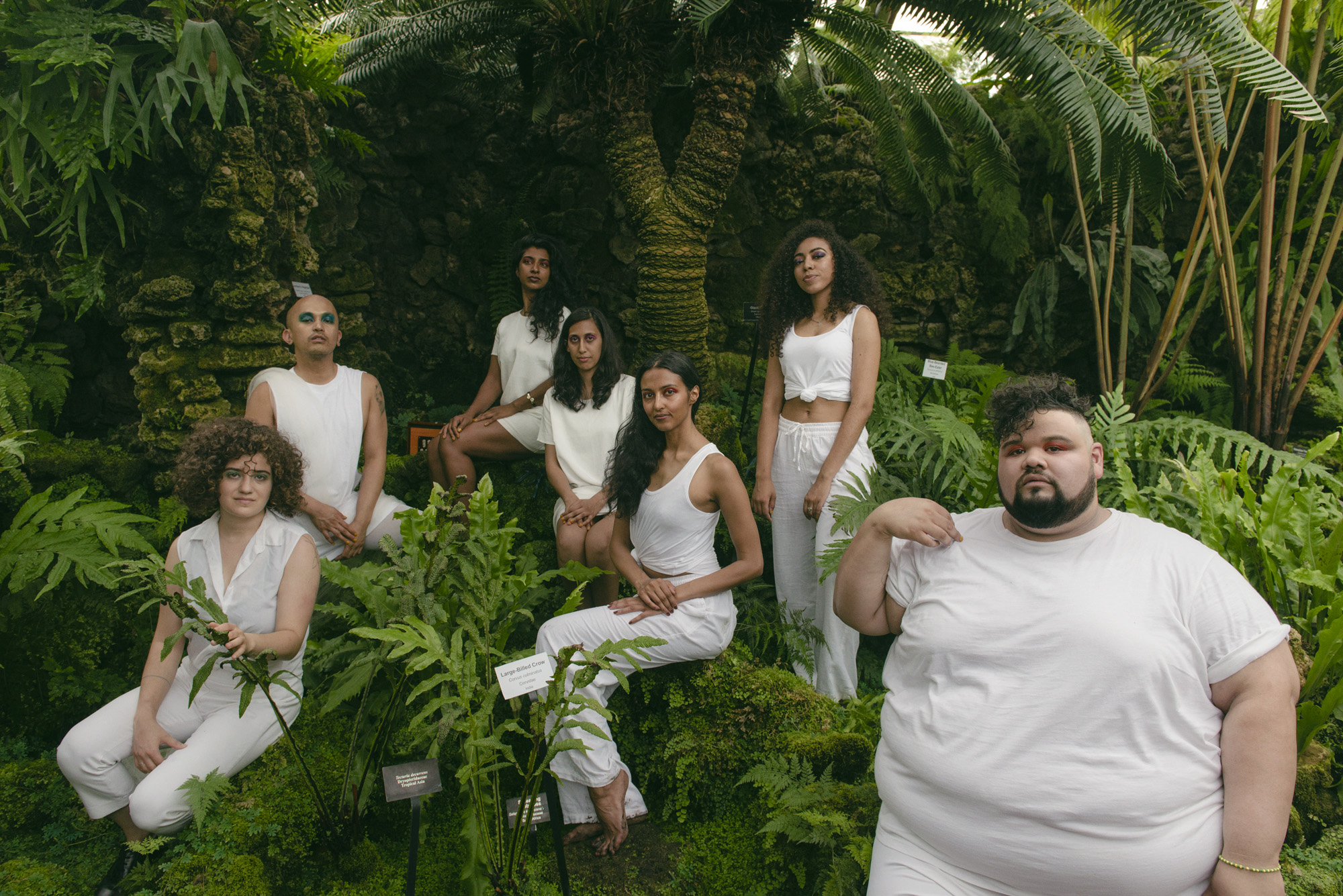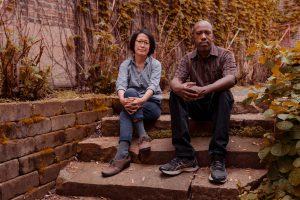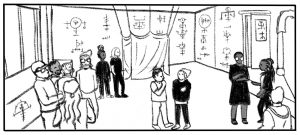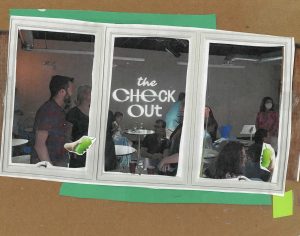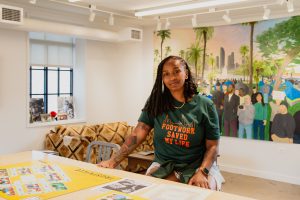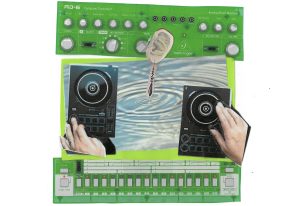As I’m nestled between the drapes of lush green fronds in the Fern Room at the Lincoln Park Conservatory, I become aware of the ambient sounds. I hear the steady trickle of nearby water and the bird calls that fill the space. As I wait for the afternoon performance to start, the bird calls begin to demand a bit more of my attention. I hear what sounds like a whistle and then what sounds like a human call. Then, clicking, brief pauses, more clicking, and suddenly a layer of bird calls that begin to sound more and more human as the moments pass, all followed by what I’m sure is a human sound. Click. Pause. Bird call? Chirp. No, definitely a human call. Wail. Human call. Pause. As I become more aware of the presence of the piece, Lakshmi Ramgopal and her ensemble, clad in all white, take their places for the final performance for this installation.

This environmental soundscape, which feels simultaneously personal and celestial, is Lakshmi Ramgopal’s installation “A Half Light Chorus” at the Lincoln Park Conservatory as part of Experimental Sound Studio’s Florasonic series. Ramgopal’s installation includes a ninety-minute, four-channel recording of imitations of birds from India and Sanskrit literature. Ramgopal’s performance within the installation featured five pieces: Sparrow Song, The Nightingale, Samyuta Hasta, Anbae Anbae (a song from the 1998 Indian Tamil-language romantic comedy Jeans, written by A.R. Rahman), and Monsoon Rain Falls. This multifaceted performance blends Ramgopal’s sound work, arrangements from 1990s Tamil movies, and movements taken from Butoh and Bharatanatyam dance. All of the sound pieces are set to appear on Ramgopal’s upcoming album, which is due early 2019 and is being recorded at Experimental Sound Studio.
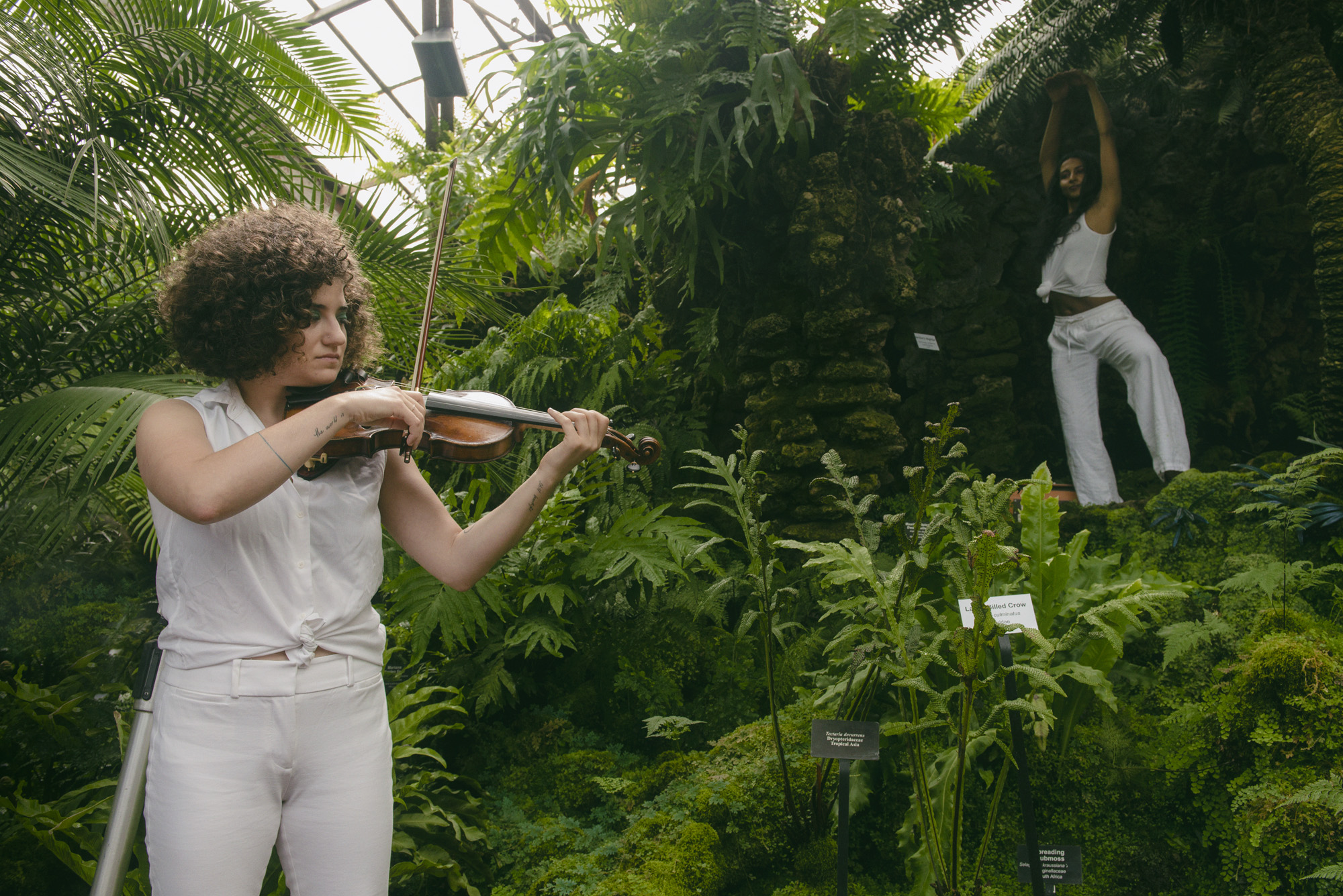
As the performance begins, a seven person ensemble emerges from various locations in the Fern Room to create a captivating world of call and response layered with violin and shruti box performance, clapping and chanting, and opulent dance. Early in the performance, Ramgopal is positioned independently on a high rock formation above the crowd. As she plays the shruti box and sings alone, members of her ensemble are across the Fern Room pathway on another rock formation, performing choreography in a slow, self-controlled manner. The movements themselves are drawn directly from Bharatanatyam, one of several classical Indian dances. The ensemble members begin a back and forth chorus with Ramgopal right over the heads of the audience. This sort of duality, which runs through the entire performance, evokes ideas of connectivity and kin, and being set in a greenhouse amongst prehistoric ferns–one of the oldest plant types in the world–it brings to mind themes of antiquity versus contemporaneity.
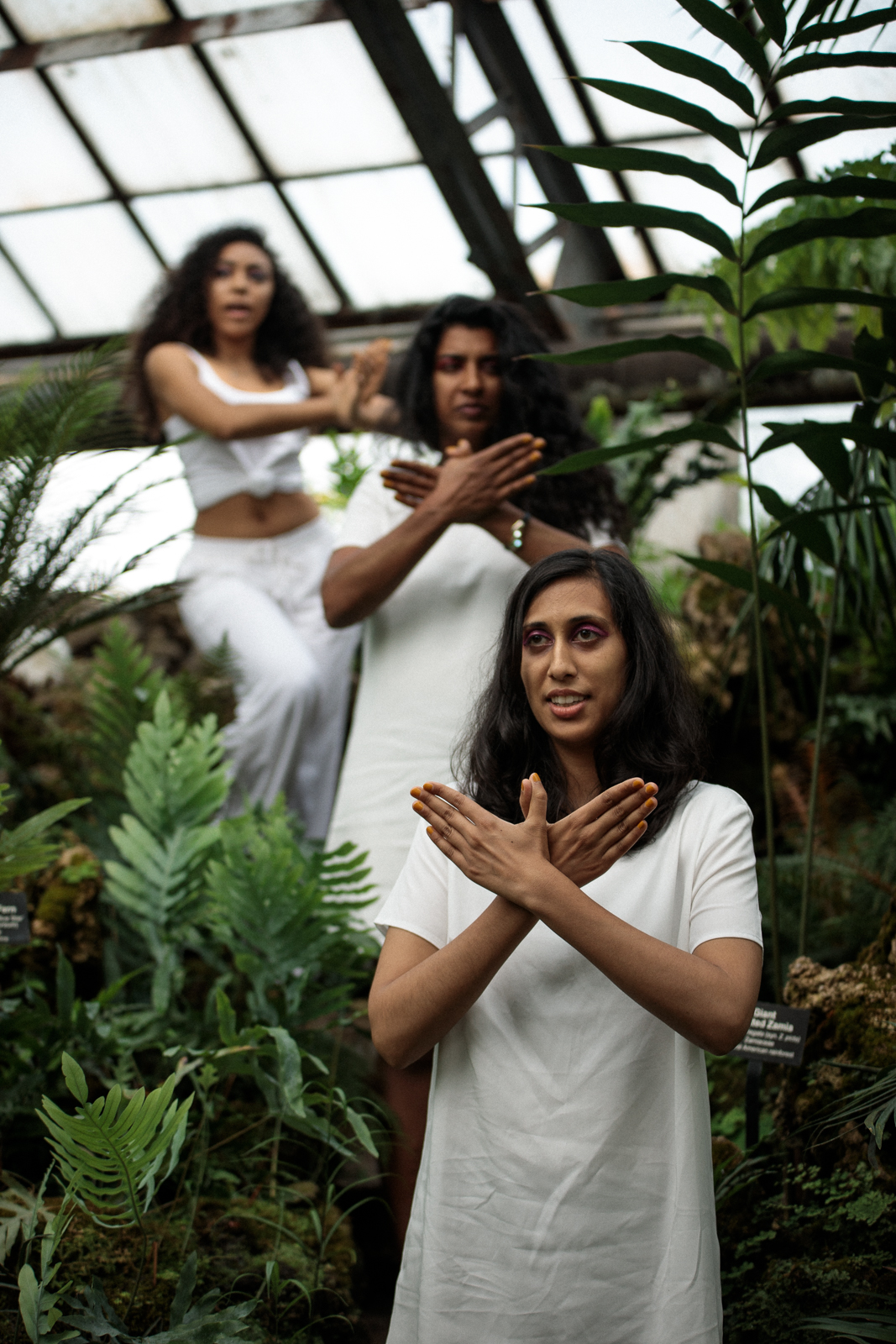
The final piece in Ramgopal’s epic performance is Monsoon Rain Falls. Here, Ramgopal asks the audience to participate. She begins by dividing the large group in half. One side of the Fern Room is to make the sound of thunder by clapping on their legs, and the other half is to create a bird call vocally. It becomes clear that the side of the room responsible for the bird sounds are not participating enough to Ramgopal’s liking, so she calls out “I can’t hear you, birds!” a handful of times until the crowd grows louder and louder as a result of her encouragement. Ramgopal layers her vocals as the dancers begin unrolling large pieces of white tulle that become incorporated into their movements. The energy of the room noticeably shifts as all of the sounds crescendo toward a peak and waver at the plateau for about a minute and a half. As quickly and beautifully as the piece came together, it begins to slowly decrease and drift to an end.
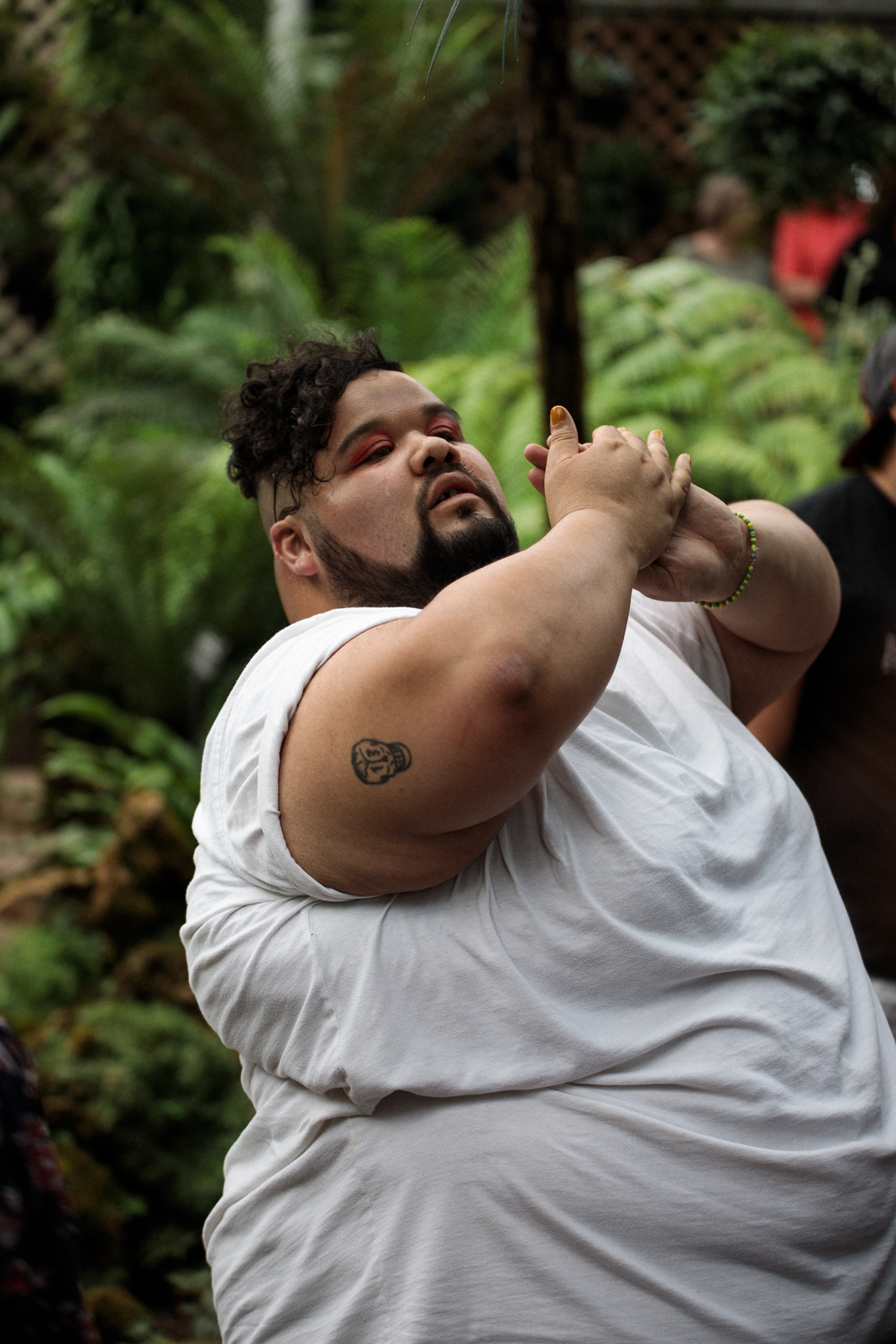
After the performance, I had a few moments to sit down with Ramgopal, who explained that this performance explored avian motifs with traditional, even ancient art forms. Many of the pieces in the performance explored birds that were present in her childhood in various ways, and that are also present in Bharatanatyam hand gestures. She had handpicked each member of her ensemble: Lucy Little, Subi Shah, Sonal Aggarwal, Asha Rowland, Rosé Hernandez, and Kiam Marcelo Junio. Ramgopal explained that her recent and current work was born out of three major changes that had happened in her personal life: the death of her grandmother, a relationship ending, and the birth of her niece. She noted that it was new for her to incorporate her personal life into her work.
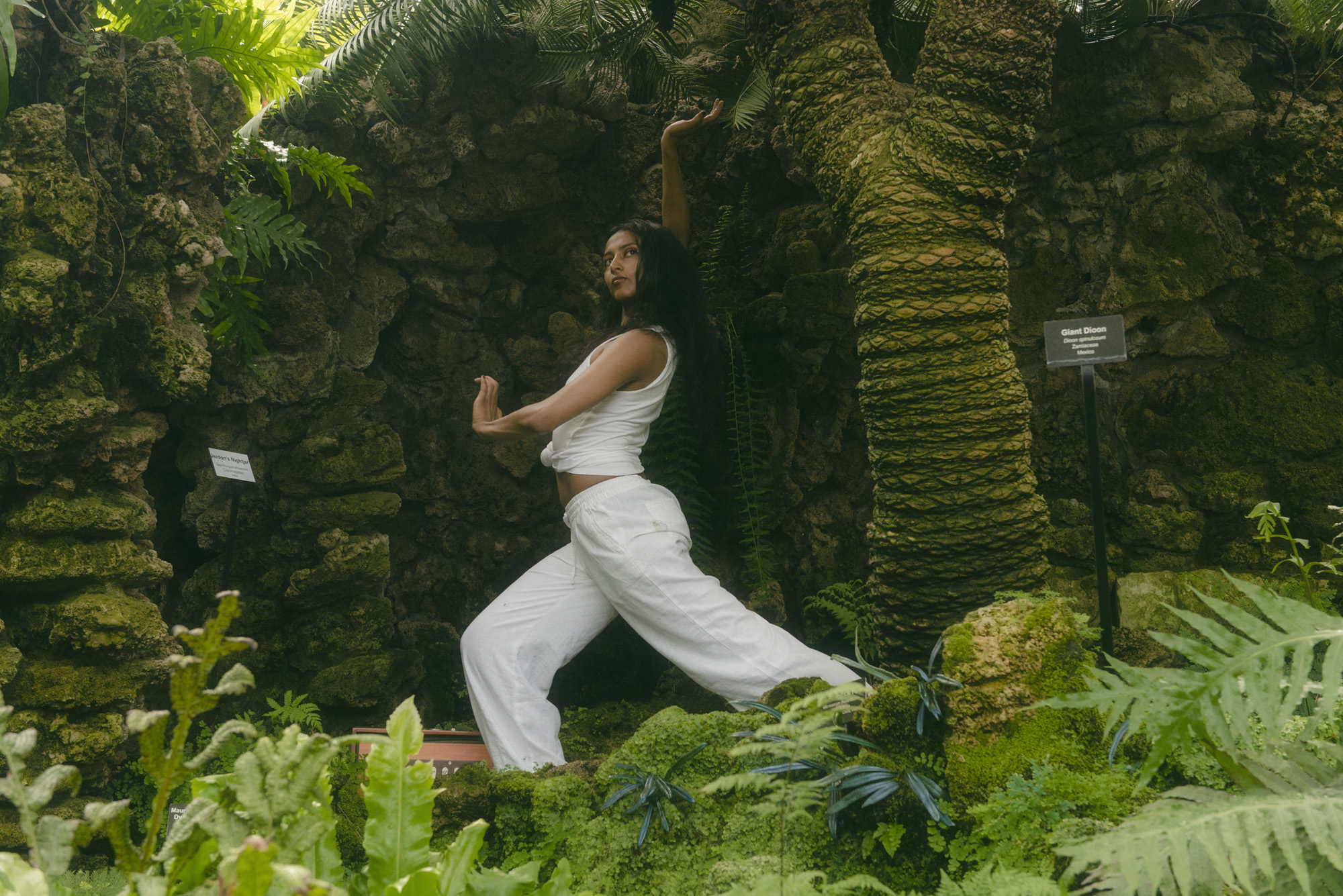
Ramgopal’s “A Half-Light Chorus” was born out of Experimental Sound Studio’s Florasonic program, which started in 2001. The program commissions artists to create sound installations specifically for the Fern Room in the Lincoln Park Conservatory and is the only ongoing sound installation commissioning program in the country. I asked Ramgopal how her experience working with Experimental Sound Studio helped to support her work. She enthusiastically explained that the unparalleled access to space she was given was essential for the creation of “A Half-Light Chorus”. In addition, she noted that her time with Experimental Sound Studio helped bring her work to a much broader audience. This point was demonstrated by the number of “walk-in” visitors her performance had, as some seemed to be visiting the conservatory on their own and just happened to stumble across the performance, joining the already buzzing crowd. Ramgopal’s “A Half Light Chorus” is a testament not only to Ramgopal’s artistic power, but also to the impact of programming that supports and commissions sound artists.
Featured image: Ensemble members from the final performance of Lakshmi Ramgopal’s “A Half Light Chorus” in the Fern Room at the Lincoln Park Conservatory. From left to right: Lucy Little, Kiam Marcelo Junio, Sonal Aggrawal, Subi Shah, Lakshmi Rangopal, Asha Rowland, and Rosé Hernandez. Photo by Ryan Edmund Thiel.
 Emily Breidenbach is an arts administrator with experience working at museums, education centers, and non-profits. She is currently the Assistant Director of Marketing and Enrollment for Continuing Studies at the School of the Art Institute of Chicago (SAIC) and has previously managed strategic communications for the Krannert Art Museum, the Frank Lloyd Wright Foundation, and the Museum Education department at the Art Institute of Chicago. She has a B.F.A. in Art History from the University of Illinois at Urbana-Champaign and is currently pursuing a M.A. in Arts Administration and Policy at SAIC.
Emily Breidenbach is an arts administrator with experience working at museums, education centers, and non-profits. She is currently the Assistant Director of Marketing and Enrollment for Continuing Studies at the School of the Art Institute of Chicago (SAIC) and has previously managed strategic communications for the Krannert Art Museum, the Frank Lloyd Wright Foundation, and the Museum Education department at the Art Institute of Chicago. She has a B.F.A. in Art History from the University of Illinois at Urbana-Champaign and is currently pursuing a M.A. in Arts Administration and Policy at SAIC.
